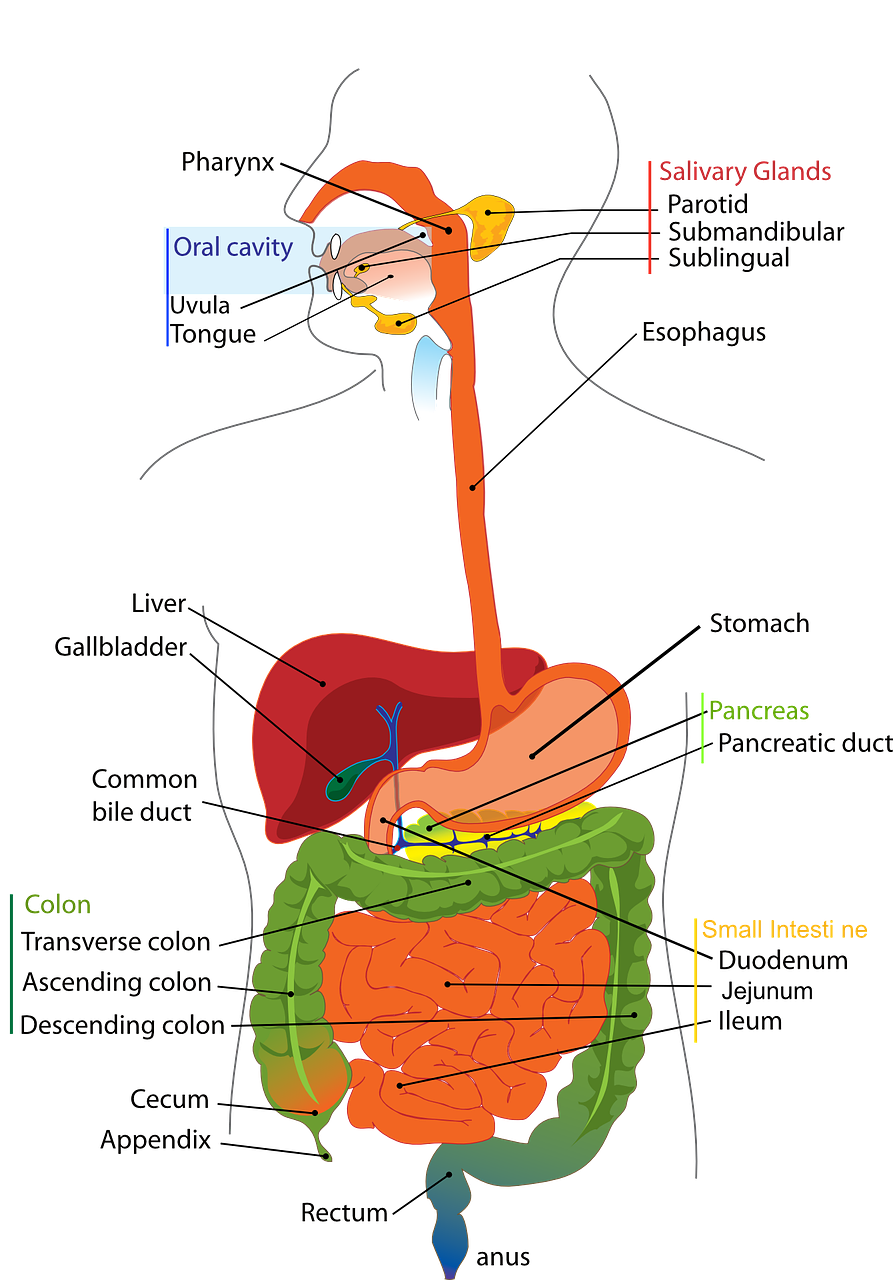Many symptoms of fluoroquinolone toxicity involve autonomic nervous system dysfunction.
The autonomic nervous system (ANS) regulates bodily functions such as the heart rate, digestion, sweating, salivating, respiratory rate, pupillary response, urination, sexual arousal, and certain reflex actions such as coughing, sneezing, swallowing and vomiting. The ANS also controls the balance between the parasympathetic (the “rest and digest” or “feed and breed” system) and the sympathetic (fight or flight system) nervous systems.
Many fluoroquinolone toxicity victims/”floxies” (those who have been poisoned by Cipro/ciprofloxacin, Levaquin/levofloxacin, Avelox/moxifloxacin, Floxin/ofloxacin or other fluoroquinolone antibiotics) struggle with:
- Digestive dysmotility
- Either sweating too much or too little
- Increased heart rate / racing heart
- Breathing difficulty / air hunger
- Increased frequency, urgency, and pain with urination
- Sexual dysfunction
- Loss of libido
- Dry mouth and dental problems
- Dry eyes and vision problems
- Adrenal dysfunction and fatigue
- Lightheadedness
- Loss of balance
- Anxiety
- Difficulty regulating blood-sugar levels
ANS dysfunction is also common among those with POTS/Postural orthostatic tachycardia syndrome (“The hallmark sign of POTS is a measured increase in heart rate by at least 30 beats per minute within 10 minutes of assuming an upright position”), EDS/Ehlers–Danlos syndrome (a grouping of genetic connective tissue disorders), and MCAS/Mast cell activation syndrome or MCAD/mast cell activation disorder (an inflammatory immune system disorder that leads to many multi-symptom, chronic illness). ANS dysfunction is also a symptom of each of these illnesses.
Fluoroquinolone toxicity symptoms mimic and overlap with those of POTS, EDS, and MCAS/MCAD. All these disorders are multi-symptom, chronic illnesses for which there is no cure. In addition to causing ANS dysfunction, fluoroquinolone toxicity, like EDS, causes connective tissue damage, and like MCAS/MCAD, fluoroquinolone toxicity involves immune system dysfunction. There is significant overlap in symptoms, and maybe pathology, between fluoroquinolone toxicity, POTS, EDS, and MCAS/MCAD.
You can find many examples of ANS dysfunction (and other symptoms of fluoroquinolone toxicity that overlap with symptoms of POTS, EDS, and MCAS/MCAD) in the stories of fluoroquinolone toxicity on https://fqwallofpain.com/, http://www.fluoroquinolonestories.com/, https://www.facebook.com/groups/floxies/ and here on https://floxiehope.com/. Personally, I experienced several ANS dysfunction symptoms, including digestive dysmotility, increased heart rate, dry eyes, loss of balance, anxiety, adrenal fatigue, difficulty regulating blood-sugar levels, and I didn’t sweat for years after I was hurt by ciprofloxacin.
Most of my ANS dysfunction symptoms, along with all my other fluoroquinolone toxicity symptoms, have improved.
The thing that helped to improve my digestive motility most was supplementing hydrochloric acid (HCL). I think that probiotic supplements and foods, meditation, and time also helped to heal my digestive tract.
A Chinese herbal supplement called suxiao jiuxin wan helped to calm my racing heart. I think that acupuncture, stress reduction, and time also helped.
I can’t pinpoint anything specific that cured my dry eyes, inability to sweat, or loss of balance, but those symptoms have all subsided with time.
Anxiety is common among “floxies,” and it can be severe. The post, Treating Fluoroquinolone Anxiety, goes over some suggestions as to how to deal with it. Magnesium and uridine supplements helped me to get through fluoroquinolone-induced anxiety, and those supplements have helped others too. In addition to reading Treating Fluoroquinolone Anxiety, I also suggest reading some of the recovery stories from people who have recovered from fluoroquinolone toxicity anxiety, especially Marcela’s Story, Ruth’s Story, and Nick’s Story.
I still struggle with adrenal fatigue and difficulty regulating my blood-sugar. I tend to feel better when I reduce my stress levels, avoid caffeine, avoid alcohol, and cut out sugar. I’m imperfect about those things though.
ANS dysfunction, and the diseases associated with it (fluoroquinolone toxicity, as well as POTS, EDS, MCAS/MCAD, etc.) are serious, and often the symptoms of these diseases are severe and life-altering. They are not trivial, and there is no easy or simple “cure” for ANS dysfunction or any related diseases.
With the severity of ANS dysfunction and related diseases noted, I’m going to make a suggestion that I hope doesn’t seem too trite:
Love, connection, community, laughter, and peace can all help to heal the autonomic nervous system. Meditation and breathing exercises are helpful too. Anything that you can do to bring love, connection, community, laughter, and peace into your life will be helpful in healing your autonomic nervous system.
Before you accuse me of being too hippy-dippy, hear me out on the logic behind suggesting that love and peace are healing. When you are stressed, or when you feel unsafe or threatened, your sympathetic nervous system–the fight-or-flight system–is activated, and subsequently, your digestive system shuts down, you either sweat profusely or stop sweating, your heart races, your breathing becomes shallow, etc. You have an acute moment of ANS dysfunction. For most people, this situation resolves itself as soon as the stressful moment passes, and the parasympathetic nervous system is re-activated. However, people with ANS dysfunction (whether it is caused by fluoroquinolone toxicity, POTS, EDS, MCAS/MCAD, or something else), get “stuck” in a state of sympathetic nervous system activation and parasympathetic nervous system disengagement. Love, connection, safety, community, laughter, peace, meditation, and more, activate the parasympathetic nervous system, and shut off the sympathetic nervous system that is shutting down your ability to digest food, have sex, see clearly, etc. Activation of the parasympathetic nervous system helps to relieve symptoms of sympathetic nervous system overdrive, and helps to relieve symptoms of ANS dysfunction.
Exercises and practices that activate and heal the vagus nerve–the long nerve that connects your brain to your digestive tract and various organs, and controls your autonomic nervous system–can also help to heal your ANS, and relieve symptoms of ANS dysfunction. The post, Hacking Fluoroquinolone Toxicity via the Nervous System, goes over the connections between the vagus nerve and fluoroquinolone toxicity, and the post, 32 Ways to Stimulate Your Vagus Nerve (and Symptoms of Vagal Dysfunction), goes over some ways that you can stimulate your vagus nerve, which activates the parasympathetic nervous system, and reduces symptoms of ANS dysfunction. Love, laughter, connection, breathing exercises, acupuncture, etc. help to activate and stimulate the vagus nerve.
ANS dysfunction is complex, and it is not an easy thing to fix or “cure,” and I hope that my suggestion of love and stress-reduction as helpful in symptom alleviation isn’t seen as trite or dismissive.
I wish that ANS dysfunction, and the symptoms associated with it, were more acknowledged as symptoms of fluoroquinolone toxicity. They are serious, severe, and cause significant pain and suffering. Even though I am suggesting that peace, love, and meditation are helpful (they are), they are not simple cures that can be implemented in a short period of time. They are processes and practices, and despite doing their best to meditate regularly, love heartily, etc. many people are still very ill with fluoroquinolone toxicity, and other ANS dysfunction diseases. Neither peace nor love are cures for multi-symptom, chronic, illnesses like fluoroquinolone toxicity. Of course love and stress-reduction are helpful, but they’re not cures. We need more cures… and love… and acknowledgement.













… [Trackback]
[…] Read More Info here on that Topic: floxiehope.com/autonomic-nervous-system-dysfunction-from-cipro-levaquin-and-other-fluoroquinolones/ […]
… [Trackback]
[…] Find More here on that Topic: floxiehope.com/autonomic-nervous-system-dysfunction-from-cipro-levaquin-and-other-fluoroquinolones/ […]
… [Trackback]
[…] Information on that Topic: floxiehope.com/autonomic-nervous-system-dysfunction-from-cipro-levaquin-and-other-fluoroquinolones/ […]
… [Trackback]
[…] Read More here on that Topic: floxiehope.com/autonomic-nervous-system-dysfunction-from-cipro-levaquin-and-other-fluoroquinolones/ […]
… [Trackback]
[…] Info to that Topic: floxiehope.com/autonomic-nervous-system-dysfunction-from-cipro-levaquin-and-other-fluoroquinolones/ […]
… [Trackback]
[…] Find More Info here on that Topic: floxiehope.com/autonomic-nervous-system-dysfunction-from-cipro-levaquin-and-other-fluoroquinolones/ […]
… [Trackback]
[…] There you will find 58008 additional Info on that Topic: floxiehope.com/autonomic-nervous-system-dysfunction-from-cipro-levaquin-and-other-fluoroquinolones/ […]
… [Trackback]
[…] There you can find 76561 more Information to that Topic: floxiehope.com/autonomic-nervous-system-dysfunction-from-cipro-levaquin-and-other-fluoroquinolones/ […]
… [Trackback]
[…] Information to that Topic: floxiehope.com/autonomic-nervous-system-dysfunction-from-cipro-levaquin-and-other-fluoroquinolones/ […]
… [Trackback]
[…] Read More on to that Topic: floxiehope.com/autonomic-nervous-system-dysfunction-from-cipro-levaquin-and-other-fluoroquinolones/ […]
… [Trackback]
[…] Find More to that Topic: floxiehope.com/autonomic-nervous-system-dysfunction-from-cipro-levaquin-and-other-fluoroquinolones/ […]
… [Trackback]
[…] Read More to that Topic: floxiehope.com/autonomic-nervous-system-dysfunction-from-cipro-levaquin-and-other-fluoroquinolones/ […]
… [Trackback]
[…] Info on that Topic: floxiehope.com/autonomic-nervous-system-dysfunction-from-cipro-levaquin-and-other-fluoroquinolones/ […]
… [Trackback]
[…] Find More here on that Topic: floxiehope.com/autonomic-nervous-system-dysfunction-from-cipro-levaquin-and-other-fluoroquinolones/ […]
… [Trackback]
[…] Here you will find 45057 more Information on that Topic: floxiehope.com/autonomic-nervous-system-dysfunction-from-cipro-levaquin-and-other-fluoroquinolones/ […]
… [Trackback]
[…] Read More Information here on that Topic: floxiehope.com/autonomic-nervous-system-dysfunction-from-cipro-levaquin-and-other-fluoroquinolones/ […]
… [Trackback]
[…] Info to that Topic: floxiehope.com/autonomic-nervous-system-dysfunction-from-cipro-levaquin-and-other-fluoroquinolones/ […]
… [Trackback]
[…] Information to that Topic: floxiehope.com/autonomic-nervous-system-dysfunction-from-cipro-levaquin-and-other-fluoroquinolones/ […]
… [Trackback]
[…] Information on that Topic: floxiehope.com/autonomic-nervous-system-dysfunction-from-cipro-levaquin-and-other-fluoroquinolones/ […]